The Silver Age is remembered as a return of civilization following the Wertham-MSM-book burning Dark Ages. Like all turns in history there is truth in this and much more truth that gets away.
In the Golden Age there were many comic book companies. All American, DC, EC, Timely, Centaur, MLJ, Quality, Fox Feature Syndicates, Fawcett, and others all trying to get into a burgeoning market that was just being formed. No one was sure what would work. For one thing, the market was split between soldiers and children.
They read comic books which were typically 64 pages for ten cents and carried a range of stories which were four to eight pages long. Each story was self-contained, but it had very little in the way of characterization. And villains often got killed at the end of a short story, often through a twist ending.

The Flash is the most accepted start of the Silver Age, but or contenders are Martian Manhunter, the Fantastic Four. and this guy in six issues. Comic book historians have their work cut out for them
Silver Age comics were written for children. Many comics had one page fillers which would tell the reader neat things to do with their airplane models. In some ways the Silver Age started with Challengers of the Unknown, which was the first comic to be filled by a single story. Comics were still ten cents but were usually 32 pages long. The price of paper had gone up and comics had shrunk in response. However, the price would soon rise to 12 cents and keep going up.
As far as companies were concerned, there was DC and Marvel. Everyone else was an also-ran. More accurately, Charlton was an also-ran and others like Gold Key and Tower were a stand-by-the-side-of-the-road kind of competition. This virtual duopoly of the market is part of the definition of the Silver Age, or would be if anybody noticed.
The big two were about 95% of the market. In 2015 they were 64%.
The Silver Age existed as a duopoly and Stan Lee and decided, improbably, that Marvel would overtake DC. We take the Silver Age as somehow unified partly because the two giants were so similar.
But in reality, had DC been alone in the field, there still would have been a Silver Age, but it would have been very different. Let’s look at what Marvel brought to the Silver Age that was uniquely Marvel.
Stan Lee brought the artist to the fore by his use of the Marvel Method. Everyone has heard how he established the Marvel method, where he would outline what he wanted and the artists (Kirby, Ditko, Heck) would draw it with their own embellishments, and then Stan Lee would add the dialogue. DC kept the writer in the driver’s seat. In an era where the artistic and the visual came to the fore, Lee’s method was triumphant.
Part of this was simply that he had better artists to work with. He had Kirby, a man who is underestimated when you call him a legend. He picked up Ditko from Charlton. Had Charlton paid and printed decently it would have made the Silver Age a big three tussle.
Don Heck gave his own style to everything from Iron Man to the Avengers to X-Men to Marvel’s original Captain Marvel. His drawing gave first form to Hawkeye, the Black Widow, the Mandarin, and the Collector.
Without these artists and their ability to write and pace, the Silver Age would have been much poorer.
Something Stan Lee didn’t create but used much more was crossovers. Crossovers started in the Golden Age in MLJ, but Stan Lee worked at making his various heroes exist in the same universe. Timely had done this with the Human Torch-Sub-Mariner storyline, Stan Lee just took the idea and ran with it. Crossovers were not an annual event, as with Green Lantern and the Flash or the JLA-JSA team-ups. They happened without warning at any time. Superheroes literally tripped over each other because Stan Lee had decided they all lived in the real life city of New York.

No particular reason, no ‘crossover event’ that makes you buy 912 comics you usually don’t want, just Daredevil was passing by with a brain affected by radiation and fought Captain America who was doing charity work, normal stuff
Remember than early on the Fantastic Four were supposed to live in Central City. This seems to put them in the Midwest. But such fictional cities were what DC did and Stan Lee wanted them all in the same city. It made those crossovers easier to write.
And Marvel used crossovers in their issues. Not only did stories stretch over more than one issue, but they referred to previous events. By contrast in DC, when a super villain showed up again, apart from the lack of an introduction, they might as well have shown up for the first time. In Marvel, previous events affected current stories. This was a fundamental change that is still with us.
Also part of Marvel’s Silver Age, which DC has never managed to imitate, was Stan Lee’s mouth. He kept pounding about ‘senses shattering origins’ and the like. He put himself front and center and was a unified spokesperson for the stuff he was selling. And he carried his staff with him, in that stories included the creators. Lee and Kirby were threatened by Dr Doom and forced to set a trap for Reed Richards (for which they received no punishment). There were stories of the Marvel staff, like when Jack Kirby was aiming a lamp with a little bird on it. DC never did that and which staff members do you remember better, Marvel or DC? Which do you remember better, the creators then or the creators now?
Thought so.
Lee himself added flaws to his heroes. This is not the way his heroes argue with each other, the famous feet of clay. It’s that his characters were wounded. The Thing was horribly mutilated, while DC’s heroes were all handsome. There hadn’t been an ugly hero (excluding alien sidekicks) since the Heap in Airboy Comics (published by Hillman Periodicals and not DC in the Golden Age).
Daredevil was blind, not since Dr Midnight was there a ‘blind hero.’ The Dr could see in the dark and with infrared goggles could see in the day as well. Daredevil had radar sense, but he stayed blind.
Captain America was a man out of time, a lonely man who always wondered who he was and how he fit in the world. Compare that to the Batman at the time. He may have lost his parents but Batman quickly found his feet and would not question his mission until over a decade-and-a-half after the Silver Age started.
Stan Lee’s heroes were people with physical and emotional problems. And they did not always agree. When the Avengers changed line-up, both Hawkeye and Quicksilver (neither being as smart as the Scarlet Witch) thought they should take over from Captain America.
That was one of the big things Marvel added to the Silver Age. If you look at the Justice League, can you tell me who is the leader? They come up with suggestions which everybody agrees with immediately. Compare that to the Fantastic Four who argue constantly, even to the point of breaking. The leaders were established, Mr Fantastic in the Fantastic Four, Captain America in the Avengers, but they had to deal with challenges.
Marvel added characterization to villains, right with Fantastic Four #1. Stan Lee did that. The Mole Man became a villain because (according to his story) he was rejected for being so ugly. Did not help him develop a decent personality, either. Remember that this guy was dealing with the Thing, who is really ugly. Two reactions to the same thing.

Not only is he ugly, look at his wingmen; no wonder he never picks up a date even though he’s worth billions of dollars. Seriously, he’s got diamonds the size of footballs.
In issue #5, Dr Doom appeared, although his origin wasn’t revealed until about two years later. But he simply isn’t villainous for its own sake like Luthor at the time. He had a tragic accident that mutilated his face and unhinged his mind, which was already in trouble. Again, the wounded character. He has no place where he can be at home in science, magic, among the Roma, or in Latveria generally. He becomes a loaner, unable to make friends so when his face is scarred in an accident so is he.
Without Marvel the background of villains would not have been made important. Like the times in which they existed, the Silver Age believed villains could be explained by an accident, a disadvantage, or a rejection by society at large. It meant that villains started to have quirks which made for depth.
Golden Age stories happened almost entirely on Earth. In his first story, Black Adam traveled the universe only to die when he got here. Captain Marvel didn’t meet him in space so the two of them could battle there. Mr Mind was a worm who we first see on the Moon. And Captain Marvel’s mentor, the wizard Shazam, resided in a small extra-dimensional reality.
Superman came from Krypton, but once he got to Earth he pretty well stayed here until the Dark Ages. The Specter did seem to leave this dimension but that is actually an assumption backed by culture. If he did go to heaven, heaven is the bottom of some clouds which shine with light. After that he stays here.
At one point late in the Golden Age, the Human Torch just flew to Jupiter. Seriously, he went to an airport,flamed on, took off and flew to Jupiter, had an adventure and nearly ran out of flame on the way back. Captain America had to catch him. It all took less than a day.
But essentially the heroes of the Golden Age stayed on Earth. In the Dark Ages Superman and Batman went to other planets with almost pathological regularity, as fit with the fifties belief in space travel.
The Silver Age was something else altogether. The Fantastic Four started in space, later went to the ‘mysterious blue area’ of the Moon (what were the well-known areas of the time?), returned there, and would still later help Apollo land on the Moon for the first ever Moon landing. In this they were no different from DC, where space travel was ridiculously easy.
And DC also created other dimensions in the superhero genre. The parallel worlds of Earth-One and Earth-Two.
But it was Marvel that launched other dimensions to heights no one thought of. And we mean much more than the Negative Zone which came a couple years after the crossover between JSA and JLA. We’re talking Ditko.
Not only did he design Iron Man’s new almost art deco armor, he designed the visuals of Dr Strange and that was a head trip in itself. Particularly, he created the weird paths floating on nothing from one island to another in the world of Dormammu. The vision was so striking that it was imitated in the appearance of the Negative Zone, where those paths between islands in space also exist.
But in the hands of Ditko, despite the really bad printing of the era, you got images of a world you couldn’t be certain Dr Strange entered physically or was just his own dreamscape. Because not only did Strange visit Dormammu he visited the realm of Nightmare. And let’s not forget, Nightmare was his old foe in his first ever story.
Dr Strange entered worlds not like this one as a regular fare. And Ditko drew them with a panache that made you worry about dangers and yet want to explore further. There was always the question of what lay at the end of the path Dr Strange did not explore.
And sometimes those paths would contain doorways into yet further dimensions that we never see, and sometimes there are doorways that just seem to be lintels. You walk through a doorway – why is it even there?
The other character who was magical (though he didn’t look it) and went into other dimensions regularly was Thor. The Thunder God went between Asgard and Earth, but his first villains were rock giants of Saturn (and they were never seen again).
These worlds opened the possibilities for superheroes. And it marked the Silver Age. In the Golden Age magic users from Zatarra to Dr Fate to Jack Frost did not go into other dimensions for stories.
In the Golden Age, magic was the go. The original Green Lantern had a magic ring powered by a sentient, glowing, meteorite. In the Silver Age he was a member of an intergalactic space police force. And the science fiction ethos was true for DC, Marvel, Gold Key (Dr Solar), and Charlton (Captain Atom).
There was still room for magic, not only with Dr Strange but Charlton’s Nightshade. But usually it was subsumed to the needs of plot and science was still the ethos of the age. Dr Strange kept to this by being a medical doctor (so was Thor, spot the pattern and explain why two doctors never, ever, talked about medicine).
Stan Lee’s version of science was radiation. Captain America was originally just given Super Soldier serum, and so was The Destroyer (basically a knockoff). Like the Blue Beetle, Cap was originally powered by a vitamin, which was new knowledge in the thirties. In the Silver Age vita rays were added (but since no one cared about The Destroyer, he stuck with just the injection).
The X-Men’s Beast was created when his father was inundated with radiation, still lived, still bred, and got a super-strong, super-agile genius child out of it. This origin would be embarrassing when people remembered that he worked in a nuclear power plant. Dr Banner was turned into the Hulk by gamma radiation. The Fantastic Four were created when they met Cosmic radiation, which has a large component of gamma radiation (which no one seems to have noticed).
Everyone had the Silver Age optimism. But Marvel had one more thing it had in abundance and neither DC nor the Golden Age had not. They had academic qualifications. In the Golden Age there was Green Lantern, a railroad engineer, there were millionaires and playboys, tinkerers abounded (e.g. Airboy and his ornithopter, birdie), a fair few soldiers, some reporters, a lawyer or two, and several police. The academics tended to be archeologists who discovered magical artifacts or native skills. That was the typical spread of employment.
In Marvel’s Silver Age we have physicists (Reed Richards, Bruce Banner), doctors (Dr Strange and Thor), engineers (Iron Man and Peter Parker was in high school but already specializing in science), scientists (how do you classify Henry Pym?), and there were some executives (Namor, T’challa, Nick Fury and Tony Stark) and a lawyer (Daredevil). On the whole a much more qualified list of professions.
But where they don’t have those qualifications or power they are legacies (Cap), are tacked onto someone who does have them (the Wasp), are part of a rag-tag bunch (Hawkeye, Quicksilver, and the Scarlet Witch) who are outsiders trying to push their way in, or they’re a bunch of high school students some of whom are clearly brilliant at science (Spider-Man, Hank McCoy). It was the Age of Science and the Marvel Silver Age supported that fully, even with its magical characters.
Without Marvel it would have been a very different, and probably duller Silver Age.







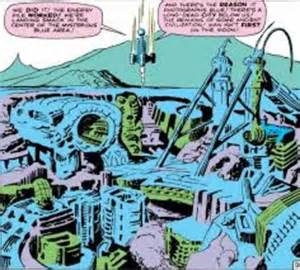
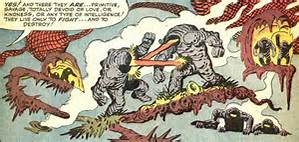
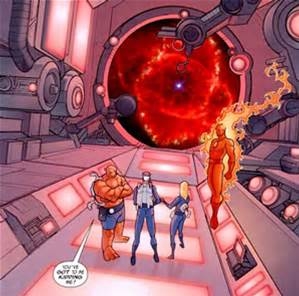
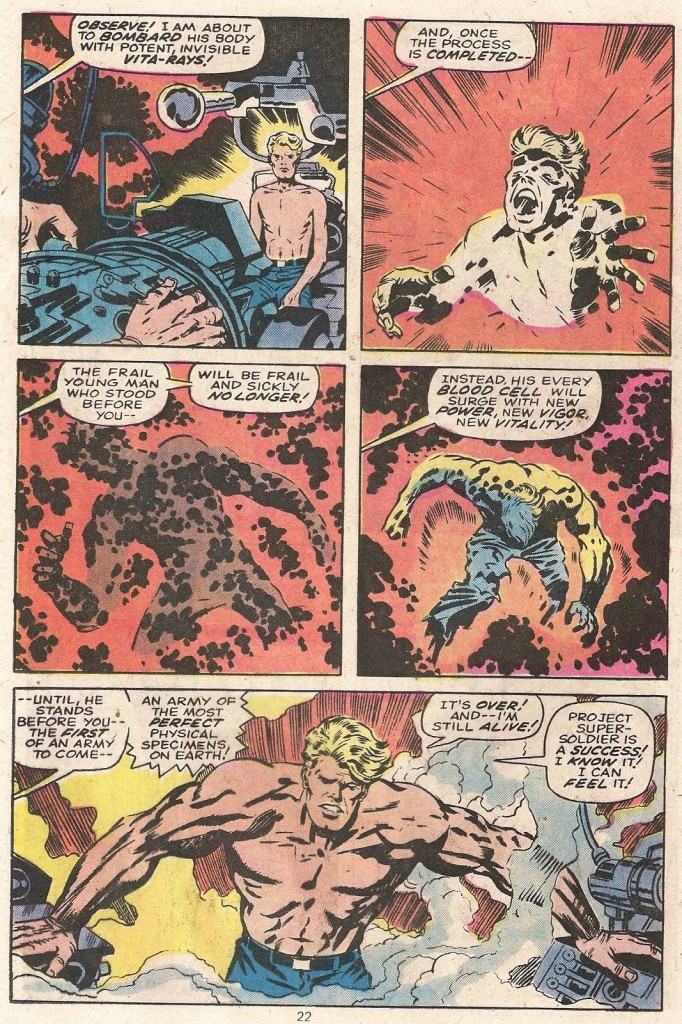
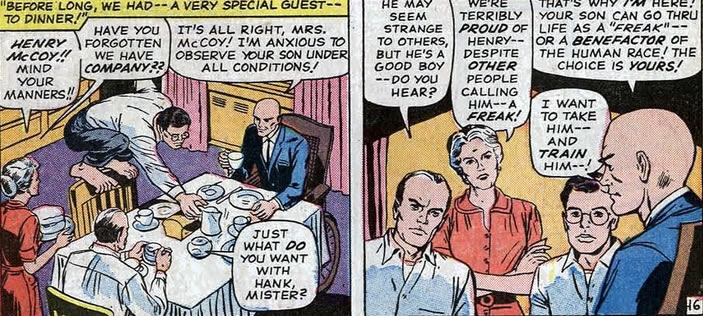
Comments are closed.